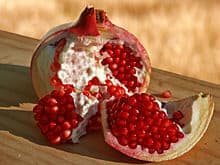A low-cost catalyst to produce hydrogen, which could make clean energy cheaper
Scientists at the Indian Institute of Science (IISc) have developed an inexpensive catalyst, sodium cobalt metaphosphate, to produce hydrogen from water. Hydrogen is a clean energy source used in fuel cells. Sleek vehicles that run on hydrogen fuel cells have just started entering the market. The IISc scientists’ invention could be a major step in making fuel cells more affordable.
Typically, ruthenium and platinum are the catalysts used to generate hydrogen from water. These catalysts are quite expensive, but without them the reaction would be slow. Sodium cobalt metaphosphate, which the IISc team has developed, is just as effective a catalyst as ruthenium and platinum, but costs only a fraction as these.
“The material cost [of the sodium cobalt metaphosphate catalyst] is over two hundred times less than the current state-of-the-art ruthenium dioxide catalyst, and the reaction rate is also faster,” Ritambhara Gond, a doctoral candidate at the Materials Research Centre at IISc , said in a press release.
According to a paper co-authored by Gond, published this March in the journal Angewandte Chemie, the high reaction rate could be due to a “chemical couple” between the catalyst and the carbon used in the reaction. Gond says that the catalyst can also be used over multiple cycles because it shows “high stability” even after the reaction.
A gel to protect farmers from pesticides
Researchers at the Institute for Stem Cell Science and Regenerative Medicine (InStem) in Kodigehalli have developed a gel that can protect farmers from the side effects of organophosphate pesticides. Organophosphate pesticides are very commonly used in India. While effective at killing insects, these can also harm humans and even cause death.
Farmers are exposed to these pesticides through the skin, and many report experiencing pain after spraying these. According to a paper by the InStem team, published last October in the journal Science Advances, these pesticides inhibit the enzyme acetylcholinesterase, which causes the neurotransmitter acetylcholine to accumulate. This in turn can lead to neurological disorders, paralysis, and suffocation.
A common way to prevent exposure is to use protective equipment like suits and gloves, but these are not used in India due to discomfort and inconvenience given the climate here. Hence the researchers wanted to develop a chemical that would deactivate pesticides on the skin before they entered the body.
They developed ‘poly-Oxime gel’ that can be used on the skin. Lab tests showed that rats on which the gel was applied, did not show any symptoms of poisoning when exposed to the pesticides. But when exposed to pesticides without gel application, they died.
“At present, we are conducting extensive safety studies in animals which will be completed in four months. Subsequently we plan a pilot study in humans to demonstrate the efficacy of the gel,” Dr Praveen Kumar Vemula, a senior member of the research team was quoted in India Science Wire.
Materials that are superconductive at room temperature
IISc researchers have found that gold films with silver nanoparticles embedded in them display superconductive properties at room temperature.
Superconductors are substances that conduct electricity with no resistance to the flow of electrons, at a certain temperature called the critical temperature. The critical temperature for most conventional metallic superconductors is notoriously low – around -253°C – making their practical use difficult. Superconductors are used to make very powerful electromagnets, which find application in Maglev trains, particle accelerators, Magnetic Resonance imaging (MRI) machines and so on.

Superconductivity has application in Maglev trains. Pic: Wikipedia
The IISc team tested 125 samples of thin films of silver nanoparticles embedded in a gold matrix, and found 10 of these to be superconductive. According to their paper published this May at arxiv.org, more of the samples displayed superconductivity when exposure to oxygen was minimised.
The team also found that increasing the concentration of silver and reducing the exposure of the film to the atmosphere increased the temperature at which superconductivity was exhibited. The material displayed superconductivity at temperatures as high as 77°C – over 300 degrees higher than the critical temperature of metallic conductors!
“If this [result] is correct, it would be the greatest work done in India since the discovery of Raman effect,” physicist and IISc professor T V Ramakrishnan was quoted as saying in The Hindu.
A natural potential-cure for pancreatic cancer
A team of researchers at InStem have found that Urolithin A (Uro A), a compound found in pomegranate, reduces the size of pancreatic ductal adenocarcinoma (PDAC) tumors.
PDAC is the seventh leading cause of cancer-related deaths world-wide, and the third leading cause in the United States. Often diagnosed at an advanced stage, only nine percent of patients survive five years beyond diagnosis.

A compound in pomegranate could potentially be used to cure pancreatic cancer. Pic: Wikipedia
InStem team’s paper published by this February in the journal Molecular Cancer Therapeutics, says that traditional chemotherapy involving the drug gemcitabine has not been very effective against PDAC.
The paper states that the team had based its research on the fact that there is an inverse relationship between berry consumption (pomegranates, strawberries, black raspberries) and PDAC occurrence. The correlation is likely due to chemicals named ellagitannins in berries.
In the body, ellagitannins are broken down to form ellagic acid. Ellagic acid is further metabolised to form Urolithin A, B, and C. Of these, Urolithin A is responsible for the antioxidant and anti-inflammatory properties of ellagitannins; it blocks the oncogenic pathways in PDAC cells.
The team genetically engineered mice that would develop PDAC and would mimic the effects of the disease in humans. The mice developed an invasive form of the cancer within four and a half weeks, and were given treatment at four weeks. The mice that were given Uro A had a higher overall survival rate compared to those that weren’t treated.
These breakthroughs show that Bengaluru scientists are well making their mark among the global scientific community.